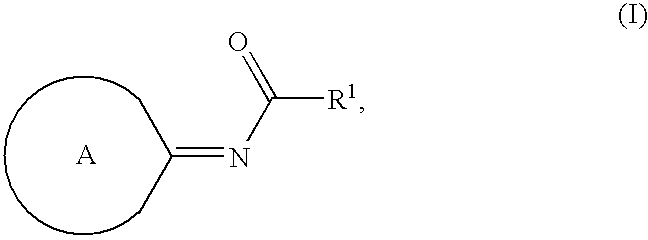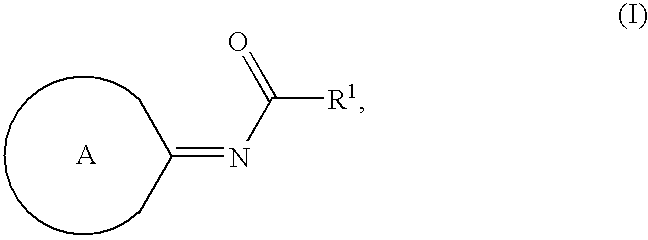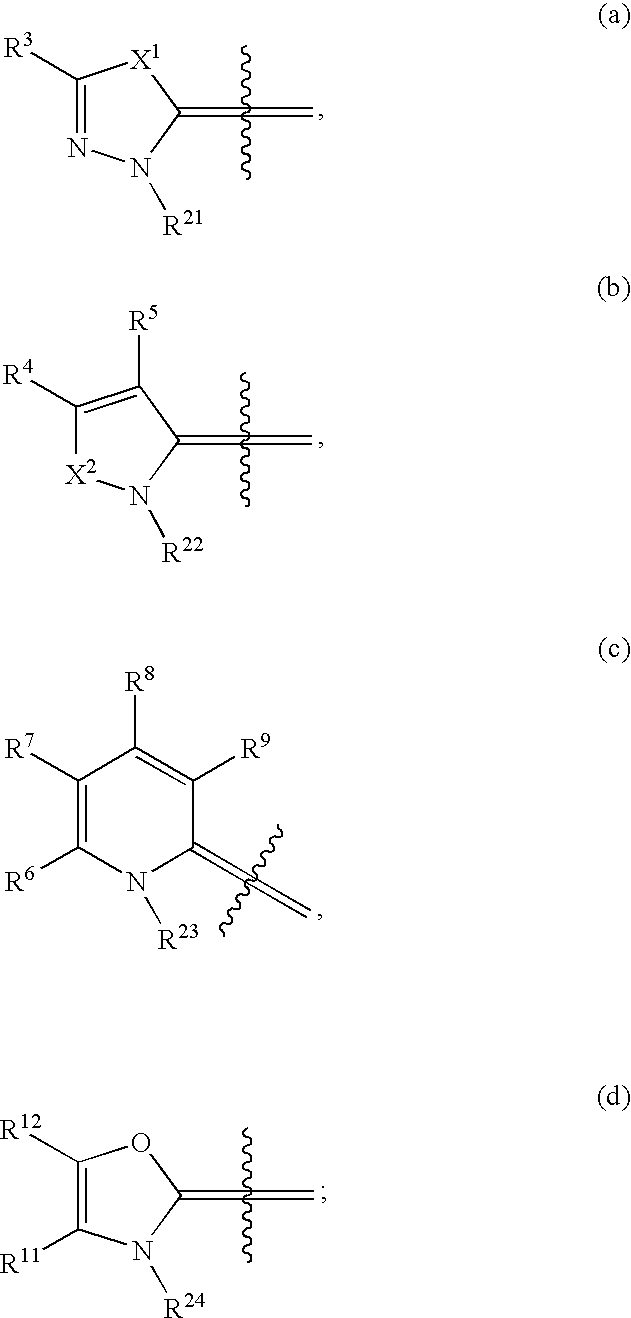Compounds as cannabinoid receptor ligands
a cannabinoid receptor and compound technology, applied in the field of cannabinoid receptor ligands, can solve the problems of limited development and clinical utility of nonselective cb agonists, site becomes a source of ongoing pain and tenderness, and no currently available therapies or drugs effectively treat all types of nociceptive and neuropathic pain states
- Summary
- Abstract
- Description
- Claims
- Application Information
AI Technical Summary
Benefits of technology
Problems solved by technology
Method used
Image
Examples
example 1
2-[2-(tert-butylamino)ethoxy]-N-[(3E)-5-tert-butyl-2-(cyclopropylmethyl)-1-methyl-1,2-dihydro-3H-pyrazol-3-ylidene]-5-(trifluoromethyl)benzamide
example 1a
di-tert-butyl 1-(cyclopropylmethyl)hydrazine-1,2-dicarboxylate
[0242]To a mixture of cyclopropylmethanol (10.1 g, 140 mmol), di-tert-butyl hydrazine-1,2-dicarboxylate (6.50 g, 28.0 mmol) and triphenylphosphine (44.1 g, 168 mmol) in tetrahydrofuran (100 mL) was added di-tert-butyl azodicarboxylate (38.7 g, 168 mmol) in portions. The mixture was stirred at room temperature for 3 hours then diluted with water and ethyl acetate. The organic extract was washed with brine, dried (MgSO4), filtered, and concentrated. The residue was purified by column chromatography using an Analogix® Intelliflash280™ (SiO2, eluted with a gradient of 0-100% hexanes in ethyl acetate) to provide the title compound (39 g, 97% yield). 1H NMR (300 MHz, CDCl3) δ ppm 0.16-0.27 (m, 2 H), 0.40-0.54 (m, 2 H), 0.94-1.09 (m, 1 H), 1.47 (s, 9 H), 1.48 (s, 9 H), 3.31 (d, J=6.10 Hz, 2 H), 6.38 (s, 1 H).
example 1b
(cyclopropylmethyl)hydrazine dihydrochloride
[0243]A solution of Example 1A (18.0 g, 62.9 mmol) and HCl in dioxane (4 N, 100 mL) was stirred at room temperature overnight. The resulting white solid was filtered, washed with ether (20 mL), and dried to provide the title compound (9.50 g, 59.7 mmol, 95% yield), which was used in the next step. 1H NMR (300 MHz, DMSO-d6) δ ppm 0.22-0.34 (m, 2 H), 0.46-0.58 (m, 2 H), 0.91-1.06 (m, 1 H), 2.79 (d, J=7.12 Hz, 2 H), 5.91 (s, 5 H); MS (DCI) m / z 87 [M+H]+.
PUM
 Login to View More
Login to View More Abstract
Description
Claims
Application Information
 Login to View More
Login to View More - R&D
- Intellectual Property
- Life Sciences
- Materials
- Tech Scout
- Unparalleled Data Quality
- Higher Quality Content
- 60% Fewer Hallucinations
Browse by: Latest US Patents, China's latest patents, Technical Efficacy Thesaurus, Application Domain, Technology Topic, Popular Technical Reports.
© 2025 PatSnap. All rights reserved.Legal|Privacy policy|Modern Slavery Act Transparency Statement|Sitemap|About US| Contact US: help@patsnap.com



